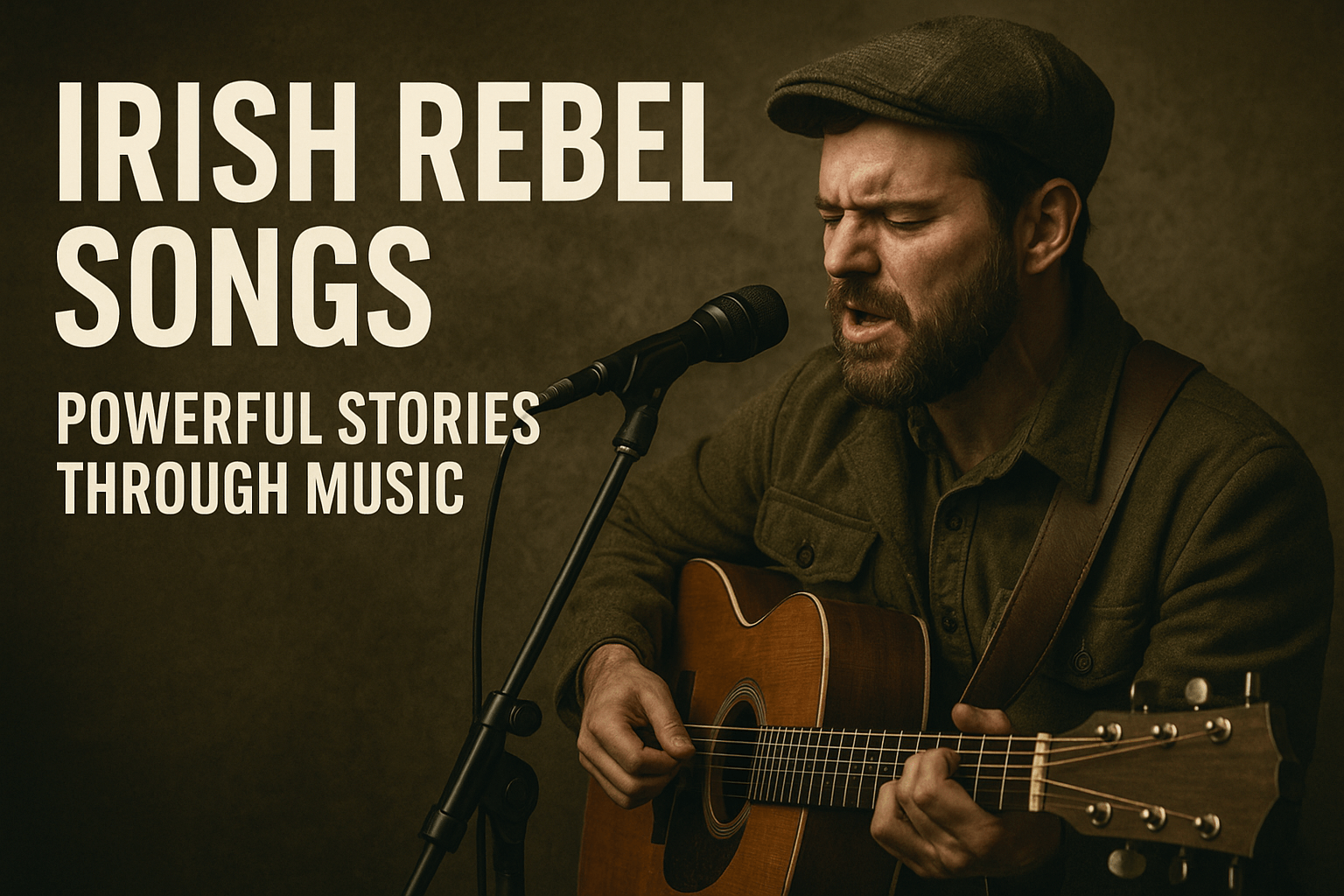Irish rebel songs are more than music. They’re stories, history lessons, and cultural touchstones—all wrapped in powerful lyrics and melody. These songs tell of Ireland’s fight for freedom, its national pride, and the everyday people who made history.
If you’re interested in Irish heritage, culture, or the Irish language, rebel songs offer a beautiful and emotional way to connect. And for learners, they’re a memorable way to improve vocabulary, pronunciation, and cultural understanding.
Let’s explore what makes Irish rebel songs so special—and how they can deepen your Irish language journey.
What Are Irish Rebel Songs?
Irish rebel songs are folk-style songs that tell stories of:
- Rebellion and resistance
- Freedom and nationalism
- Personal sacrifice and loss
- Cultural pride and identity
They’re often emotional and poetic, blending sorrow with hope. Some are hundreds of years old, passed down orally. Others were written in the 1900s and beyond.
Why Do Irish Rebel Songs Matter?
These songs reflect key moments in Irish history—moments of bravery, suffering, and resilience. They keep those stories alive.
They matter because:
- They preserve Irish history in an accessible way
- They carry powerful emotional meaning
- They keep cultural memory alive for future generations
- They often include Irish words, names, and phrases
You don’t need to be a historian to feel their impact. Listening is enough to feel a connection.
A Short History of Irish Rebel Songs
Rebel songs have appeared throughout Ireland’s long history of struggle. Here’s a quick look at the key time periods that shaped the genre:
1. The 1798 Rebellion
Songs like The Croppy Boy tell of the United Irishmen uprising—an early fight against British rule.
2. The Easter Rising (1916)
Songs such as Grace and The Foggy Dew honor those who fought and died for Irish independence.
3. War of Independence & Civil War (1919–1923)
Tracks like Come Out Ye Black and Tans speak boldly about British forces and Irish resistance.
4. The Troubles (1960s–1990s)
Songs such as The Men Behind the Wire reflect on imprisonment, injustice, and division in Northern Ireland.
Even today, these songs are sung at pubs, family gatherings, sporting events, and political rallies.
Iconic Irish Rebel Songs (And What They’re About)
Here are five well-known Irish rebel songs you may have heard—or should definitely check out:
1. The Foggy Dew
Set during the 1916 Rising, this haunting ballad contrasts Irish freedom fighters with Irish soldiers fighting in World War I.
2. Grace
A tragic love song based on true events. Joseph Plunkett, a rebel leader, married Grace Gifford hours before his execution.
3. The Fields of Athenry
A famine-era song about a man deported for stealing food to feed his family. It’s now a favorite at Irish football matches.
4. Come Out Ye Black and Tans
An energetic, rebellious tune that criticizes British troops in Ireland. Often sung with passion and pride.
5. The Men Behind the Wire
Written during the Troubles, this song tells of men imprisoned without trial. It became a powerful symbol of protest.
Learning Irish Through Rebel Songs
Irish rebel songs are a natural, emotional way to practice Irish. Even if most of the lyrics are in English, many songs include Irish names, places, and phrases that help you:
- Build vocabulary
- Improve pronunciation
- Learn cultural context
- Feel more connected to the language
Example:
“Óró, sé do bheatha ‘bhaile” is a traditional Irish rebel song sung mostly in Irish. Learning this song introduces you to useful vocabulary and native pronunciation.
You can start exploring Irish pronunciation with this Irish Pronunciation Guide.
Why Songs Help You Learn Faster
Music makes language stick. It’s easier to remember words when they’re in a melody.
With Irish rebel songs, you can:
- Repeat lyrics to practice new words
- Hear natural rhythm of spoken Irish
- Get comfortable with Irish sentence structure
- Enjoy learning, which helps with consistency
Looking for a beginner-friendly starting point? Try our Irish Language Lessons for Beginners to go deeper alongside your favorite songs.
Tips for Learning Irish with Rebel Songs
Want to use music as part of your language journey? Here’s how to get started:
1. Pick One Song
Start with a rebel song that speaks to you emotionally.
2. Read the Lyrics
Find versions that show Irish and English side by side. Focus on repeating simple phrases.
3. Sing Along
Even if you’re unsure of your pronunciation, try it out! It’s a great way to build confidence.
4. Use Tools to Support You
Pair music with Irish flashcards or grammar tools to reinforce what you hear.
5. Be Consistent
Play your chosen song daily. Over time, you’ll naturally absorb the phrases and meanings.
Connect History, Language, and Culture
Rebel songs remind us that Irish is not just a language—it’s a living part of Ireland’s story.
Whether you’re just learning to say Dia duit (hello) or singing The Foggy Dew, you’re joining a tradition that spans centuries.
Explore how Irish revolutionaries themselves used language as a form of resistance in Irish Revolutionaries Learning Gaeilge.
External Resources
- 🎶 Irish Traditional Music Archive – Listen to traditional Irish recordings
- 📰 RTÉ Archives – Explore Irish cultural history
- 📚 BBC on Rebel Music – A look at rebel songs and politics
Final Thoughts: Let the Songs Lead the Way
Irish rebel songs are more than melodies. They’re living history—stories of hope, sorrow, defiance, and pride. Learning their lyrics, understanding their context, and even singing them can open up a deeper understanding of Irish identity.
If you’re learning Irish, these songs can become your classroom. They offer vocabulary, pronunciation practice, and cultural connection—all in one beautiful package.
🎧 Ready to make Irish part of your life?
Start your learning journey with Gaeilgeoir AI. Use our tools to build confidence, learn faster, and connect with the heart of Irish culture—through language and song.
Slán go fóill – goodbye for now!


